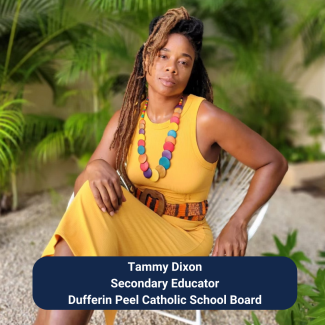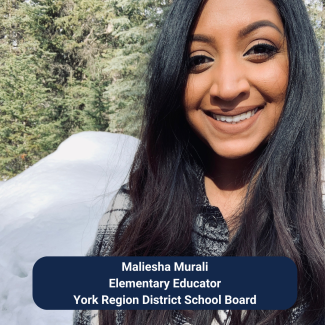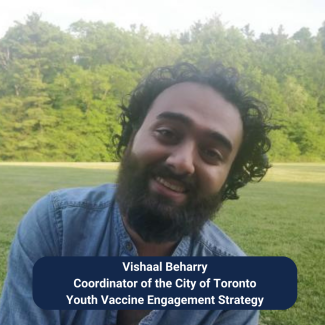
Inclusion in school communities starts by understanding that everyone is part of the whole and deserves an environment where they can meaningfully contribute, participate and thrive.
When it comes to advancing equity—especially in Ontario schools—most of us have big goals. After all, a desire to help students thrive is usually what calls educators and administrators to their careers in the first place.
What’s more, we recognize that inclusive learning environments are better for all students—not just those who have lived experience with marginalization. “When equity is put at the forefront, students are more creative,” says Tammy Dixon, a secondary educator with the Dufferin Peel Catholic School Board. “They feel safe. They’re more interested in their learning.”
But while good intentions and an understanding of the benefits of equity are a solid start, they aren’t enough to create lasting change. For that, we need a holistic approach that prioritizes equity and values diversity and inclusion.
Why an equity-centred approach is more important now than ever.
The Health and Physical Education (H&PE) curriculum is based on the vision that the knowledge and skills students acquire in the program will enable them to live healthy active lives and thrive in an ever-changing world.
At Ophea, we know that belonging is the foundation of quality H&PE. Unfortunately, we also recognize that, historically, H&PE has played a role in Canada’s colonialism, and that it continues to be implicated in racism, ableism, and many other oppressive behaviours in the education system.
Furthermore, the COVID-19 pandemic has exacerbated the deep inequities many students face in the pursuit of their health and well-being in schools. We simply can’t afford to continue letting so many of our learners fall through the cracks.
That’s why Ophea is refocusing to put equity at the forefront of all that we do through our Equity-centered Strategy for Well-being in Ontario Schools.
There’s no quick fix when it comes to equity.
“We have to listen. We have to learn. We have to be patient,” says Maliesha Murali, an elementary educator with the York Region District School Board. “Sometimes we miss the mark with that. We want to have quick information and quick results. Unfortunately, I don’t think equity works like that.”
This desire for a quick fix is something Dixon has experienced first-hand. In 2020, following the racial protests in the wake of the murder of George Floyd, many organizations and school boards were eager to address equity. “Was it the hot topic at the time, or something they really wanted to be involved with?” she asks. “The actions show the answer.”
At Dixon's school, a series of professional learning opportunities on equity were provided for educators. While the content provided valuable information to support the learning in this space, she shares that more guidance and ongoing support would have been more practical in how this would look like in our everyday classrooms. “If we’re making equity seem like a checklist item, and the material isn’t always being delivered by qualified professionals with lived experience,” she points out, “then fast forward and consider how students feel in our schools.”
Nurturing equity begins with listening.
Centering and amplifying the voices of those with lived experience at the margins; learning from and collaborating with equity-centered groups; and using equity-centered frameworks (like intersectionality and culturally relevant and responsive pedagogy) are essential components of Ophea’s renewed strategy for building equitable learning environments.
In Murali’s experience, students are especially eager to participate when equity-related listening takes this type of holistic approach.
“We have to lay the foundation for equitable spaces and opportunities, even just by the stories we’re telling, For example, we want to be mindful of not only seeing BIPOC [Black, Indigenous, People of Colour] stories related to systems of oppression. Yes, that’s a huge part, but there’s so much room to then explore and celebrate. Kids get really excited to see these stories in a new, positive light.” Maliesha Murali
In a similar vein, when educators take the time to know the diversity of learners in their classrooms—including their cultural background, lived experiences, strengths and needs—it helps them to create a personalized teaching and learning environment. “Know your learners,” Murali advises. “Ask yourself, ‘What are the different tools everyone needs to succeed?’ Then take your most vulnerable learner and start from there.”
Building equity requires a holistic approach.
“[Building equitable environments] takes time, commitment and financial support,” points out Vishaal Beharry, Coordinator of the City of Toronto Youth Vaccine Engagement Strategy, whose perspectives are informed by his conversations with youth about how their values are reflected in education.
And while he sees a broader commitment to equity among youth, educators, and leaders in school communities, it feels unclear to him if that same commitment is in place at higher levels.
In Dixon’s opinion, the problem begins with issues of representation. The majority of those in positions of power continue to be white, straight, able-bodied males—who struggle to understand what they haven’t experienced.
"Some leaders in government can’t see that they’re oppressing other people,” she says. “It’s in their blind spot.” Until we can elect leaders who reflect the diversity of Canada, who can understand and adopt an intersectional approach when looking at systems of oppression with a critical lens, Dixon believes workshops and training should not be the only answer to equity in school communities.
Further to this, Dixon believes that having role models and school leaders who share students’ identities is important—not only for helping students to feel connected to the education system today, but for the future of the teaching profession itself. If students can’t envision themselves in these roles, the percentages of BIPOC applicants to teachers’ colleges will continue to be low.
Assumptions are short-cuts with disastrous results.
Of course, having blind spots isn’t limited those in positions of power. We all come from certain backgrounds and have had certain experiences that form beliefs we may not even be aware of.
“Assumptions reflect a desire to more easily categorize and process how we engage with the world, to our detriment.” Vishaal Beharry
In the classroom, this can have particularly disastrous results. “Biases create missed opportunities,” says Murali. “When we assume a student is only capable of A, B and C, we automatically set the bar lower than usual. Assumptions don’t leave room for mistakes, for growth. And that’s the most important part of learning.”
An equitable future will grow from a common understanding.
Murali recalls how from 2016–2018 her school had a budget to timetable in culturally relevant and responsive pedagogy, which they used for a series of student assemblies focused on equity. In K-3 assemblies, for example, they discussed what equity meant, showed it in pictures and read a related storybook. Meanwhile, grades 7-8 students learned how to recognize and call out micro-aggressions.
Unfortunately, that funding has since been cut, but Murali recalls with hope the impact it made. “It was amazing to see the movement the students then created,” she says. “It was a ripple effect. That learning continued throughout the whole school year. Hundreds of students, all with a common understanding of what equity means. When I think of the future of equity and diversity,” she says, “it looks like that.”
Educators can’t achieve equitable learning environments alone.
In the same way that Murali’s school community began with a common understanding, building more equitable learning environments province-wide will mean getting on the same page.
Among other things, Ophea’s role will be to continue working to understand the demographics and learning needs of teachers, principals/school leaders and regional and provincial leaders; to highlight classrooms, schools and school boards with thriving cultures of equity; and to facilitate system-level dialogue on the value of well-being, equity and human rights.
How will we know that we’re making progress?
Ophea recognizes that building equitable learning environments won’t be a quick fix or an easy road, and that’s okay. The progress made will be well worth the effort.
“Cultivating and celebrating equity in the school community bleeds over into all walks of life,” says Beharry. “Students don’t stop valuing equity when they leave the classroom. They take it with them into the community.” That’s great news because, ultimately, we’ll be counting on today’s youth to carry the work forward.
In the meantime, the goal is to keep listening, keep learning, and keep moving forward. And luckily, as we advance step by step, there’s an easy way to tell if we’re on the right track. “It will feel like belonging,” suggests Murali. “In an equitable environment, you’re going to feel appreciated. Seen. Validated. You’re going to feel important. I think that’s what we all deserve, at the very least.”



